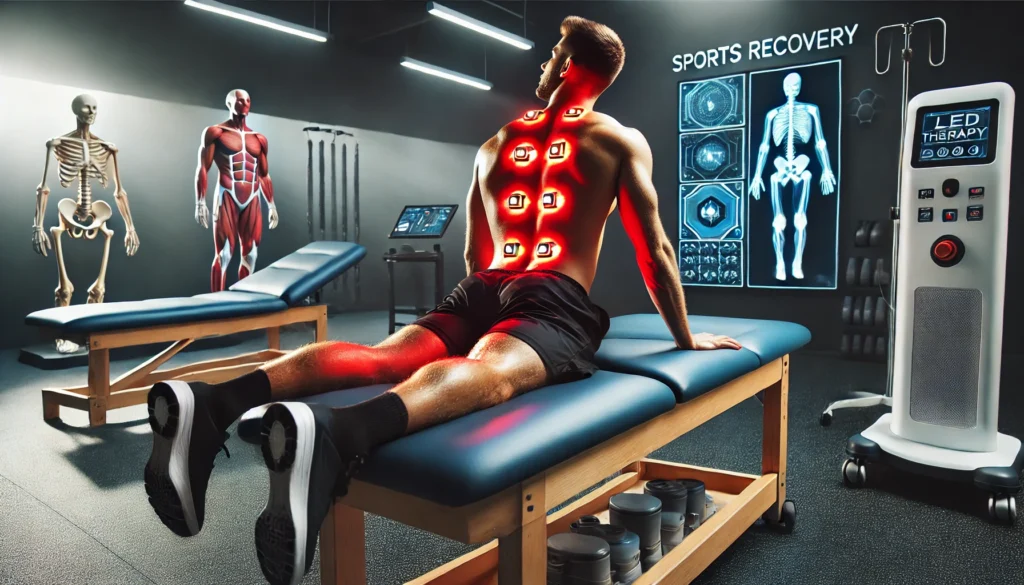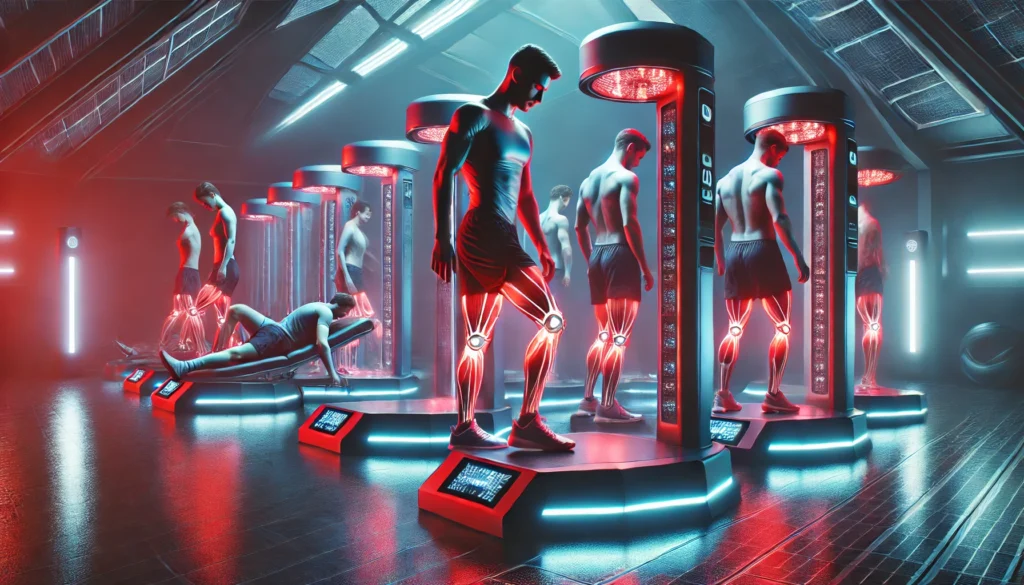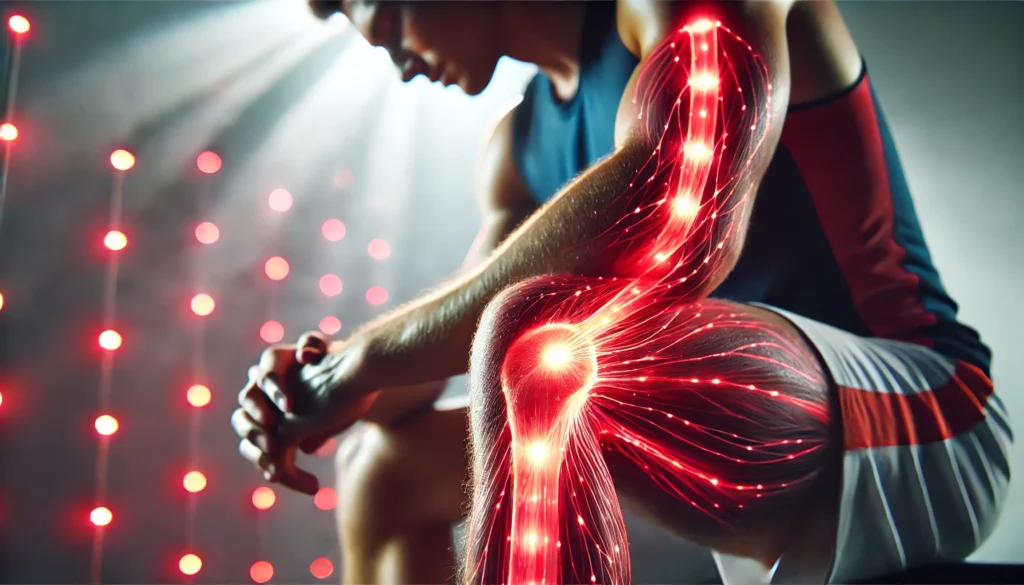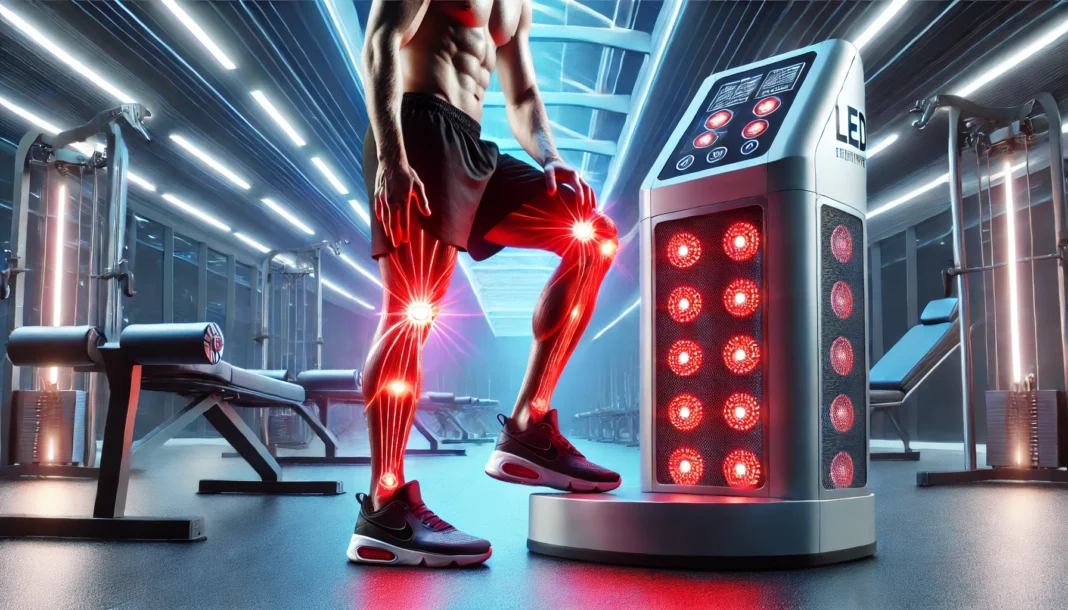Understanding the Science Behind Medical Grade LED Light Therapy
Athletes continuously seek innovative ways to enhance their recovery, improve performance, and reduce downtime caused by muscle fatigue and injuries. Medical grade LED light therapy has emerged as a powerful tool in sports science, offering non-invasive and scientifically-backed benefits. This therapy operates on the principle of photobiomodulation, wherein specific wavelengths of light penetrate the skin to stimulate cellular processes.
You may also like: Red Light Therapy for Muscle Recovery: How Athletes Can Speed Healing and Enhance Performance
Research has shown that medical grade LED light therapy machines can accelerate tissue repair by enhancing mitochondrial function. The mitochondria, often referred to as the powerhouse of the cell, absorb light energy and increase the production of adenosine triphosphate (ATP), the primary energy currency of cells. This process supports muscle regeneration, reduces oxidative stress, and minimizes inflammation—three crucial factors in athletic recovery. As a result, professional athletes and fitness enthusiasts alike are turning to LED light therapy machines to optimize their post-training recovery and reduce the likelihood of injuries.
The Role of Light Therapy in Muscle Recovery
Muscle recovery is an essential component of athletic performance, ensuring that the body remains resilient against overtraining and strain-related injuries. Traditional recovery methods such as stretching, hydration, and sleep are fundamental, but advancements in technology have introduced new solutions such as light therapy machines. These devices use medical grade LED light therapy to enhance muscle recovery at a cellular level, accelerating the body’s natural repair mechanisms.
One of the primary benefits of LED light therapy machines is their ability to increase blood circulation. Improved circulation facilitates the delivery of oxygen and nutrients to fatigued muscles, expediting the removal of metabolic waste products such as lactic acid. This leads to reduced muscle soreness and enhanced recovery times. Studies have demonstrated that athletes who incorporate light therapy into their recovery protocols experience less muscle stiffness and an increased range of motion, allowing them to train more consistently and effectively.
Additionally, medical grade LED light therapy plays a critical role in reducing delayed onset muscle soreness (DOMS). DOMS is a common issue for athletes engaging in intense training sessions, often resulting in muscle pain and discomfort for several days. By utilizing light therapy machines, athletes can mitigate these effects and maintain peak performance levels without unnecessary recovery delays.
Enhancing Injury Healing with LED Light Therapy Machines
Injuries are an inevitable aspect of an athlete’s journey, but the speed and effectiveness of recovery can significantly impact performance outcomes. Medical grade LED light therapy is increasingly recognized for its ability to support the healing process by stimulating collagen production, reducing inflammation, and increasing cellular regeneration.
When applied to soft tissue injuries such as sprains, strains, and tendonitis, light therapy machines promote cellular repair by stimulating fibroblast activity. Fibroblasts are responsible for collagen synthesis, which is essential for tissue integrity and strength. By accelerating collagen production, LED light therapy aids in the healing of torn muscle fibers, ligaments, and tendons, ultimately reducing recovery time.
Furthermore, inflammation is a primary concern in sports-related injuries, often prolonging the healing process. Medical grade LED light therapy mitigates inflammation by modulating the release of pro-inflammatory cytokines while promoting the production of anti-inflammatory mediators. This dual action not only relieves pain but also supports long-term joint and muscle health. For athletes recovering from surgery or chronic injuries, incorporating LED light therapy machines into rehabilitation programs can lead to more efficient healing and a faster return to peak performance.
Improving Sleep and Reducing Fatigue Through Light Therapy
Athletes require high-quality sleep to facilitate physical recovery, cognitive function, and overall performance. Disruptions in sleep patterns can lead to increased fatigue, decreased reaction times, and impaired decision-making skills. Medical grade LED light therapy has been shown to positively influence sleep quality by regulating the body’s circadian rhythm and promoting relaxation.
One way that LED light therapy enhances sleep is through its impact on melatonin production. Melatonin is a hormone responsible for regulating sleep-wake cycles. By using specific wavelengths of light, particularly in the red and near-infrared spectrum, light therapy machines can optimize melatonin secretion, leading to improved sleep onset and duration. Athletes who incorporate LED light therapy into their evening routines often experience deeper and more restorative sleep, directly contributing to enhanced recovery and performance.
Additionally, mental and physical fatigue are common issues faced by athletes, especially those involved in rigorous training regimens. LED light therapy has been found to reduce symptoms of fatigue by increasing ATP production, thereby enhancing cellular energy levels. This boost in energy contributes to reduced feelings of exhaustion and improved mental clarity, making it an invaluable tool for athletes seeking to maximize their training output.

Frequently Asked Questions (FAQ) on Medical Grade LED Light Therapy
What makes medical grade LED light therapy different from standard LED treatments?
Medical grade LED light therapy is designed with higher precision, superior quality components, and specific wavelengths that deliver more effective and targeted therapeutic benefits. Unlike standard LED treatments, which may use lower-intensity diodes and inconsistent wavelengths, medical grade devices ensure optimal light penetration for cellular repair and muscle recovery. These professional-grade devices are often used in clinical settings and by elite athletes due to their advanced features, including customizable wavelength settings and higher power output. Additionally, medical grade LED light therapy machines are FDA-cleared or CE-certified, meaning they have been rigorously tested for safety and efficacy. The durability and longevity of these machines also set them apart, providing a more consistent and reliable treatment option for serious athletes and individuals seeking superior recovery benefits.
Can LED light therapy machines be used in combination with other recovery methods?
Yes, medical grade LED light therapy works exceptionally well when integrated with other recovery techniques, such as massage therapy, cryotherapy, and hydrotherapy. By incorporating LED light therapy machines into a broader recovery regimen, athletes can experience faster healing, reduced inflammation, and improved muscle relaxation. Many sports therapists recommend using light therapy machines before a massage or stretching session to enhance circulation and loosen muscle fibers, making additional treatments more effective. Additionally, combining LED light therapy with hydration and proper nutrition further supports the body’s ability to repair and regenerate tissues. This multi-faceted approach ensures a well-rounded recovery strategy that maximizes long-term athletic performance and reduces the risk of overuse injuries.
How does medical grade LED light therapy influence mental performance and focus?
In addition to its well-documented physical benefits, medical grade LED light therapy can also enhance cognitive function and mental clarity. Research suggests that red and near-infrared wavelengths stimulate cerebral blood flow, increasing oxygenation and nutrient delivery to brain cells. Athletes who use LED light therapy machines often report improved focus, quicker reaction times, and enhanced problem-solving abilities, making it a valuable tool for both physical and mental performance. Furthermore, light therapy has been shown to regulate circadian rhythms, helping to stabilize sleep patterns, which in turn supports cognitive function and decision-making skills. The psychological benefits of consistent light therapy treatments extend beyond the athletic field, improving daily productivity, emotional resilience, and overall well-being.
Are there any risks associated with using LED light therapy machines for recovery?
Medical grade LED light therapy is widely recognized as a safe and non-invasive treatment, but there are some considerations to keep in mind. Overuse of a light therapy machine may lead to temporary skin sensitivity or mild irritation, particularly for individuals with photosensitive conditions. It is also important to use the device at the recommended distance and duration to prevent excessive exposure. Athletes with pre-existing medical conditions, such as epilepsy or lupus, should consult a healthcare provider before incorporating LED therapy into their routine. Ensuring that the machine being used is truly medical grade is also crucial, as lower-quality devices may emit inconsistent wavelengths, reducing efficacy and potentially causing unintended side effects. By following best practices, athletes can safely harness the benefits of LED light therapy while minimizing potential risks.
How does LED light therapy improve circulation and blood flow?
One of the key benefits of using medical grade LED light therapy machines is their ability to enhance circulation and promote better blood flow. The red and near-infrared wavelengths penetrate deep into the tissues, triggering the release of nitric oxide, a natural vasodilator that widens blood vessels. This process improves oxygen delivery and nutrient transport to muscles, accelerating recovery and reducing stiffness. Increased circulation also helps flush out metabolic waste products, such as lactic acid, which can contribute to post-exercise soreness. For endurance athletes, improved blood flow can lead to more efficient oxygen utilization, ultimately enhancing performance and reducing overall fatigue levels.

How often should athletes use LED light therapy machines for optimal results?
The frequency of LED light therapy sessions depends on the individual’s training intensity, recovery needs, and overall health. Most experts recommend using medical grade LED light therapy machines three to five times per week for optimal benefits. For acute injuries or significant muscle fatigue, daily sessions may be beneficial for a short period until recovery stabilizes. Each session typically lasts between 10 and 30 minutes, depending on the area being treated and the specific wavelength used. Over time, as muscle adaptation occurs and recovery improves, athletes may adjust their usage frequency based on personal experience and professional guidance. Regular and consistent use of LED light therapy contributes to long-term muscle health, reduced inflammation, and enhanced resilience against future injuries.
Can LED light therapy machines help with joint pain and chronic conditions?
Yes, medical grade LED light therapy is widely used to manage joint pain and chronic musculoskeletal conditions such as arthritis and tendonitis. The anti-inflammatory properties of LED therapy make it an effective tool for reducing swelling and discomfort associated with joint issues. Light therapy machines stimulate collagen production, which is essential for maintaining joint integrity and preventing further degeneration. Many athletes who experience chronic pain due to repetitive motion injuries find that consistent LED light therapy sessions lead to significant improvements in flexibility and mobility. By addressing inflammation at a cellular level, this therapy offers a long-term solution for managing pain and maintaining joint health without relying on medications or invasive treatments.
Can light therapy improve athletic performance beyond just recovery?
While medical grade LED light therapy is primarily known for its recovery benefits, it can also enhance overall athletic performance. By reducing muscle fatigue and promoting faster healing, athletes can train harder and more frequently without experiencing excessive strain. The improved circulation and oxygenation provided by light therapy machines contribute to greater endurance and stamina. Furthermore, studies suggest that LED light therapy can support mitochondrial efficiency, leading to increased energy production and reduced oxidative stress. These physiological benefits enable athletes to push their limits while minimizing the risks of burnout and injury, making light therapy an essential tool for maximizing long-term performance potential.
Are there specific LED wavelengths that work best for athletic recovery?
Yes, different wavelengths of LED light have distinct effects on the body, and medical grade LED light therapy machines are specifically designed to utilize the most effective ones. Red light (around 660 nm) is ideal for enhancing circulation, reducing inflammation, and promoting superficial tissue repair. Near-infrared light (between 800-900 nm) penetrates deeper into muscles and joints, making it more effective for reducing pain and improving overall recovery. Some advanced light therapy machines offer customizable settings that allow athletes to target specific concerns with precise wavelength control. Understanding which wavelengths are best suited for different recovery goals ensures that users maximize the therapeutic benefits of their treatments.
What does the future hold for LED light therapy in sports and fitness?
The future of medical grade LED light therapy in sports and fitness is promising, with ongoing research uncovering new applications and advancements in device technology. Wearable LED therapy solutions, AI-driven treatment customization, and portable light therapy machines are expected to become more widely available. As more professional athletes and sports organizations adopt LED therapy as a standard recovery tool, its acceptance in mainstream fitness will continue to grow. Emerging research also suggests potential applications for injury prevention, muscle conditioning, and even pre-competition performance enhancement. With continuous technological innovation, LED light therapy is set to revolutionize the way athletes train, recover, and perform at their highest levels.

The Future of LED Light Therapy in Sports Science
The integration of medical grade LED light therapy in sports science is still evolving, with ongoing research uncovering new applications for athletic performance enhancement. As more athletes and sports professionals recognize the benefits of light therapy machines, the technology is expected to become a standard component of training and recovery protocols.
Emerging studies suggest that combining LED light therapy with other recovery modalities, such as cryotherapy and massage therapy, can yield synergistic benefits. The potential for personalized light therapy treatments, tailored to an athlete’s specific needs and recovery goals, is also an exciting prospect. Advances in wearable LED devices and mobile applications may further enhance accessibility, allowing athletes to receive targeted therapy on the go.
In conclusion, medical grade LED light therapy represents a groundbreaking advancement in athletic recovery and regeneration. By accelerating muscle repair, reducing inflammation, improving sleep, and combating fatigue, this technology empowers athletes to push their limits while minimizing the risk of injury. As research continues to expand, the future of LED light therapy in sports science holds immense promise, revolutionizing the way athletes recover and perform at their peak potential.
medical grade LED light therapy, LED light therapy machines, light therapy machine, athletic recovery, muscle regeneration, sports injury healing, LED therapy for athletes, photobiomodulation, red light therapy, near-infrared therapy, muscle fatigue recovery, joint pain relief, sports performance enhancement, injury prevention, advanced recovery techniques, circulation improvement, chronic pain management, LED therapy benefits, sports science innovations, athlete wellness solutions.
Further Reading:
How Red Light Therapy Can Help an Athlete’s Body Recover
Accelerating Sports Injury Recovery with Light Therapy: A Review of Photobiomodulation Research
Photobiomodulation and Sports: Results of a Narrative Review
Disclaimer
The information contained in this article is provided for general informational purposes only and is not intended to serve as medical, legal, or professional advice. While NewsHealthWatch strives to present accurate, up-to-date, and reliable content, no warranty or guarantee, expressed or implied, is made regarding the completeness, accuracy, or adequacy of the information provided. Readers are strongly advised to seek the guidance of a qualified healthcare provider or other relevant professionals before acting on any information contained in this article. NewsHealthWatch, its authors, editors, and contributors expressly disclaim any liability for any damages, losses, or consequences arising directly or indirectly from the use, interpretation, or reliance on any information presented herein. The views and opinions expressed in this article are those of the author(s) and do not necessarily reflect the official policies or positions of NewsHealthWatch.

